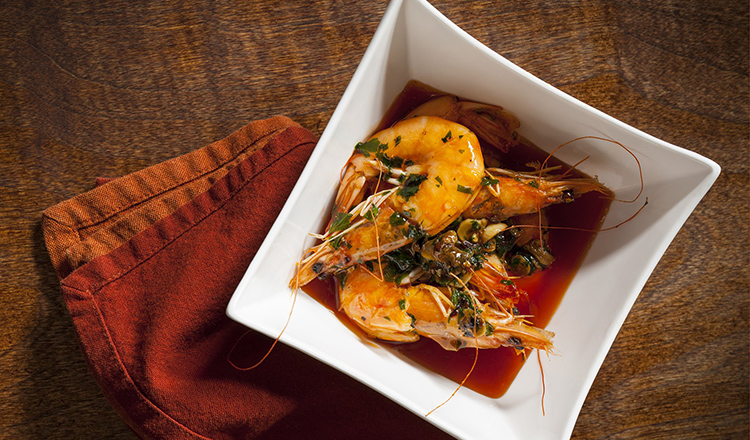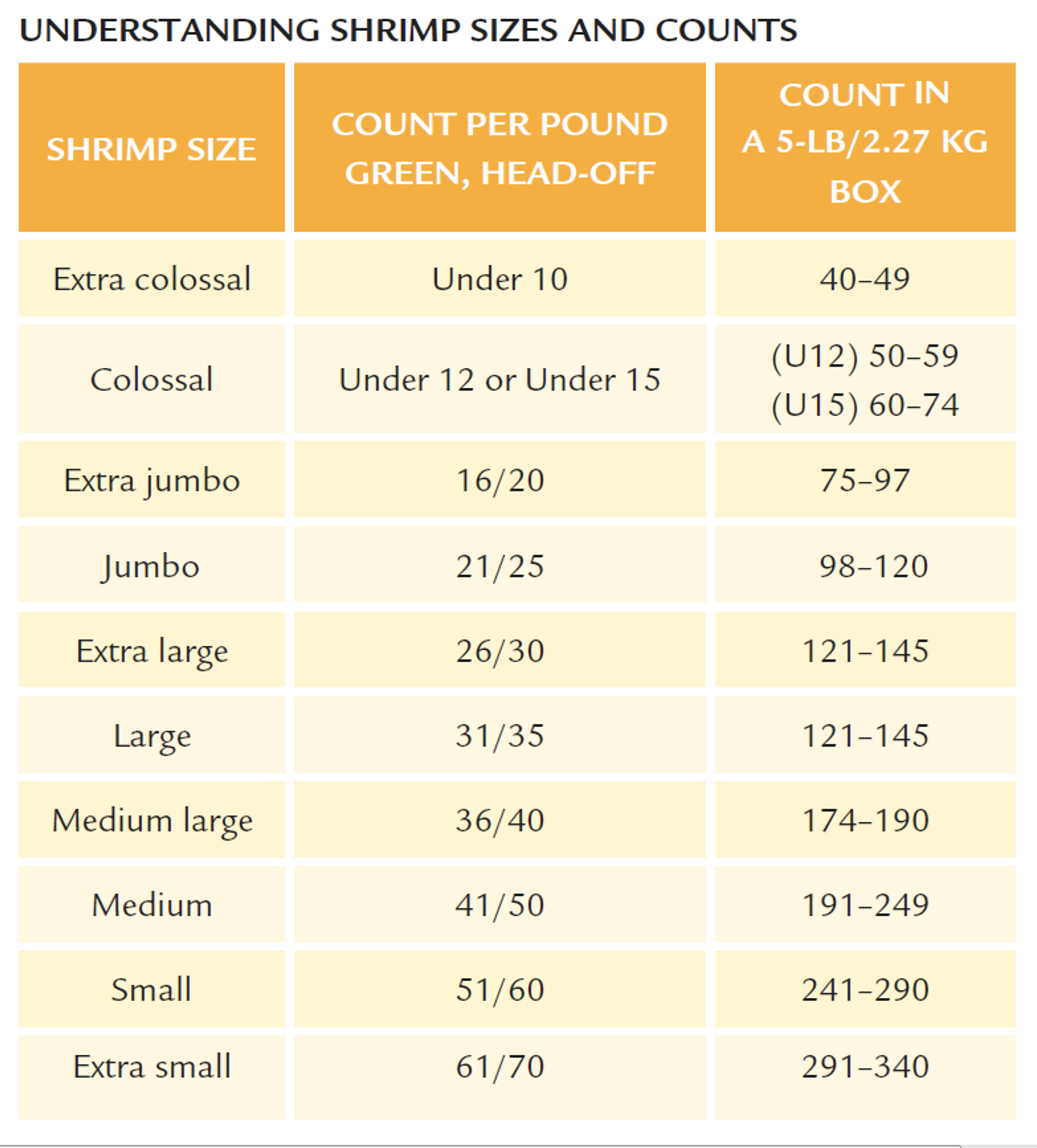
Shrimp is an easy-to-cook protein, not to mention delicious (shrimp cocktail will never go out of style), but can be sort of confusing to pick out. So many sizes and names, not to mention the choice between farm-raised and wild-caught. Keep reading for a quick refresher on the must-knows for your next trip to the market.
Shrimp are sold in sizes or counts that are expressed in numbers per pound or kilogram. As an example, shrimp marketed as 16/20 indicate the average number of shrimp per pound. Shrimp larger than 16/20 are called “U” meaning under; for example, U 15 or U 10 denote that there are under 15 or 10 shrimp per pound. The “U” designation starts at U/2 denoting shrimp with an average weight of 8 oz each.
A recipe may call for shrimp by name rather than size, like “jumbo” or “medium.” There is no universally agreed upon naming convention for shrimp, so one person’s jumbo might just be one person’s medium, but we typically follow this guide:

Of course, because shrimp are often called for by weight and not quantity, it may not really matter what size you get—especially since most grocery stores and markets typically only sell a few similar “average” sizes. If a recipe calls for “1 lb” shrimp, it doesn’t particularly matter if each serving includes 3 big shrimp or 7 smaller ones. Yes, you’ll need to adjust the cook-time depending on the size, but you’re watching for the essential visual doneness indicators anyway (opaque, pink, yields to a gentle poke), not following a clock.
A quality seafood market will give you as many details as possible, sometimes including where and how your shrimp was raised and farmed. But unfortunately, boat-to-market tracing for fish is a weak spot in the commercial fishing industry, and it is not always available information.
Wild-caught shrimp are generally considered to be better in flavor, due in part to their natural and varied diet. However, farm-raised shrimp, like other farmed seafood, are integral to the fight for sustainable seafood and healthy oceans, so don’t discount the farm-raised varieties. Ideally, you would check the packages or chat with your fishmonger about the source of the shrimp, if possible, to ensure that they were raised responsibly.
The Monterey Bay Aquarium’s Seafood Watch is a great resource to learn more about the health of our oceans, as well as the many issues that can impact our choices at the market. Their search function allows you to learn more about which shrimp sources are ideal based on their research.
No matter what shrimp you purchase, with a shelf life of only a few days, fresh shrimp must be used immediately and kept as cold as possible Store shell-on shrimp buried in drainable crushed ice or in a covered container in the coldest part of the refrigerator. Avoid storing shell-off fresh shrimp in ice because it may burn the delicate flesh; instead store them in a covered container in the refrigerator and use right away.
Use those shrimp in some of our favorite recipes:
Chilled Chile-Garlic Noodles with Shrimp
Sweet and Sour Shrimp Lettuce Wraps

something about the color of the shrimp? white shrimp vs pink for example?